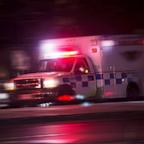The Reaches (and Limits) of Forensics
June 4 -- Detectives and sniffing dogs are largely gone from the leaf-strewn slope in Rock Creek Park where the remains of 24-year-old Chandra Levy were found. But some forensic experts say it's possible clues could remain on the forest floor.
Authorities in Washington, D.C., are faced with a puzzle. They know the former intern was killed. But they don't know how she died and they admit they may never find out exactly what caused her death. What they really want to discover is who killed her. Forensics may lead them to the answers.
For example, forensic botanists could analyze vegetation growing around the crime scene to determine how long Levy's body had been in the Washington park. Trace-evidence specialists could glean information from single strands of hair, fibers and bits of dust and pollen.
The intern had been missing for 13 months before the grim discovery in Rock Creek Park. All that was found of Levy's remains were a collection of bones, some clothing and personal effects. If authorities had found the body soon after her death, forensic entomologists could have combined data on weather and the age and kind of insects present on a body — mainly blowflies — in complicated calculations to determine a time of death.
• Interactive: Forensic Tools
As the hit television series CSI: Crime Scene Investigation has portrayed, forensic science offers a myriad of high-tech methods for analyzing clues. But as the technology behind forensic science advances, experts caution forensic scientists must take extra care to ensure they scour crime scenes for all possible clues, and that forensic analysis is not overplayed in the courtroom.
Herb MacDonell, founder of the Bloodstain Evidence Institute in Corning, N.Y., cautions forensic deduction can seem elementary, but "in forensic science, nothing is simple."
Every Action Leaves a Trace
French scientist Edmond Locard declared in the early 1900s that every violent action leaves a trace and even the most minute traces can help solve crimes. It was on this foundation that Locard opened one of the first laboratories dedicated to the field of forensic science in 1910.
Two years later, Locard found a killer by analyzing material underneath a female victim's fingernails.
Other renowned sleuths added their own contributions. In the mid-1800s, Mathieu Orfila published one of the earliest papers about the detection of poison in the blood. Henry Faulds, a Scottish physician working in Tokyo in 1880, was among the first to suggest that fingerprints could be used to identify suspects. And Calvin Goddard developed ways to determine if a bullet was fired from a suspect's gun in the early 1900s.




